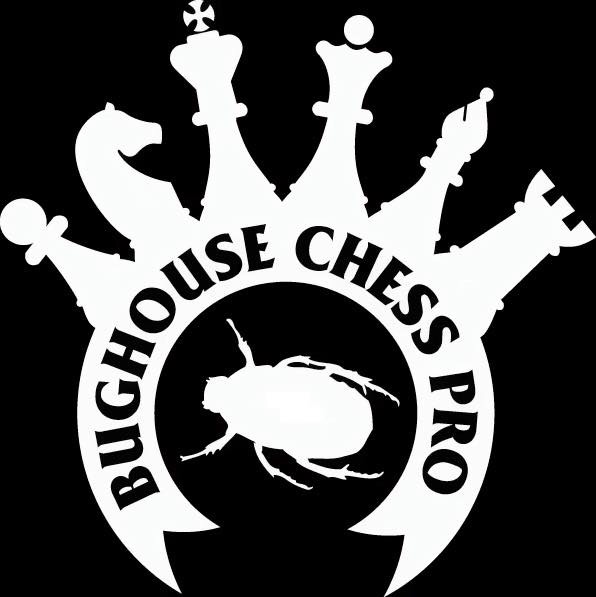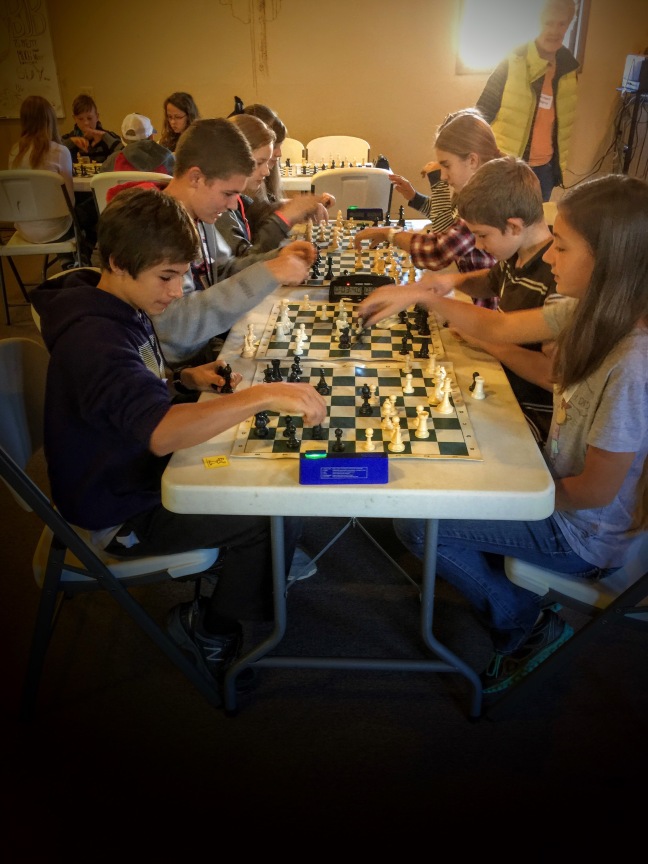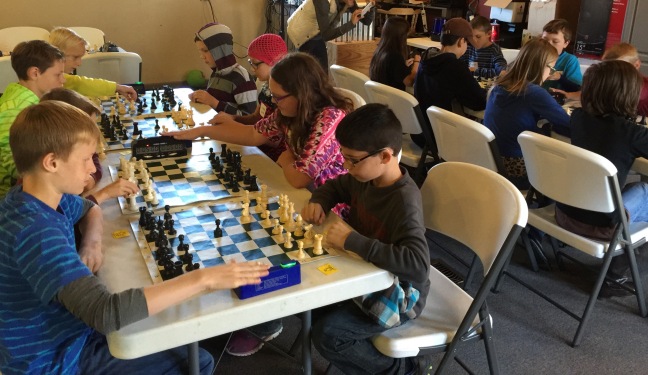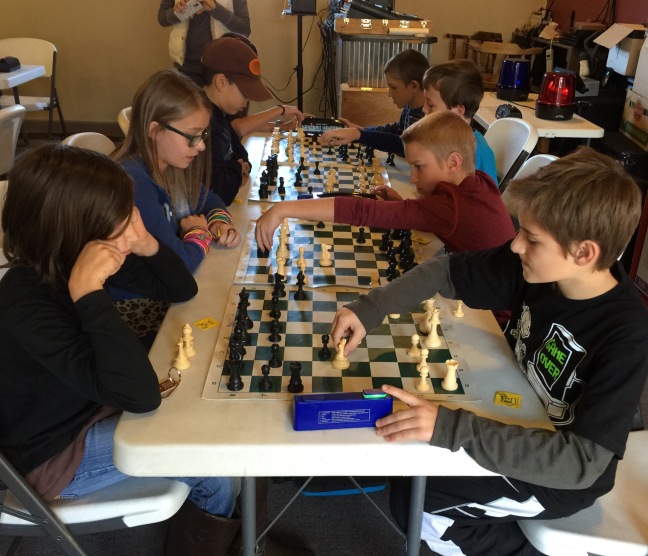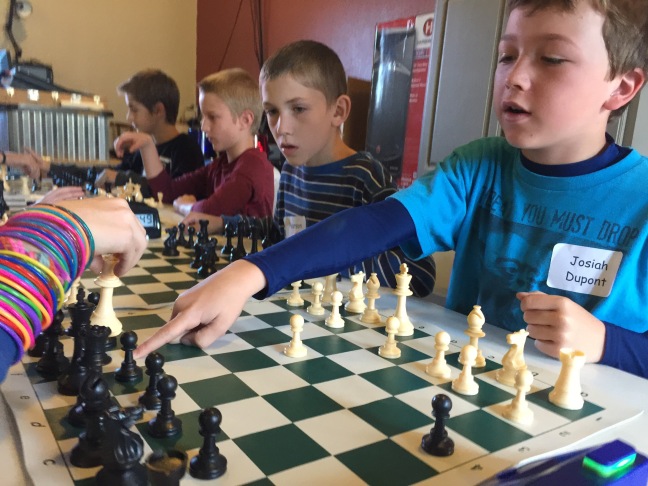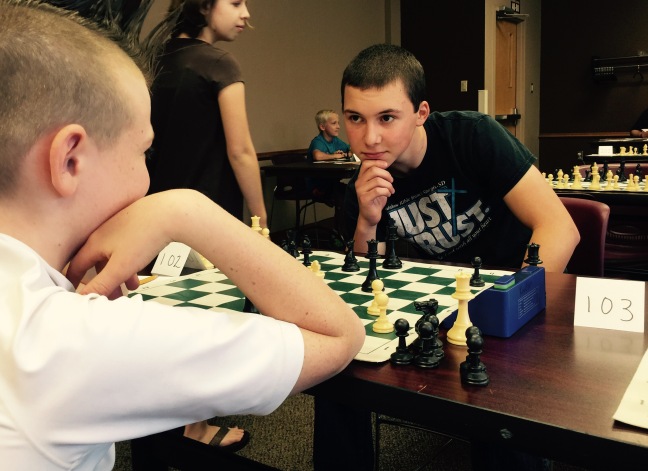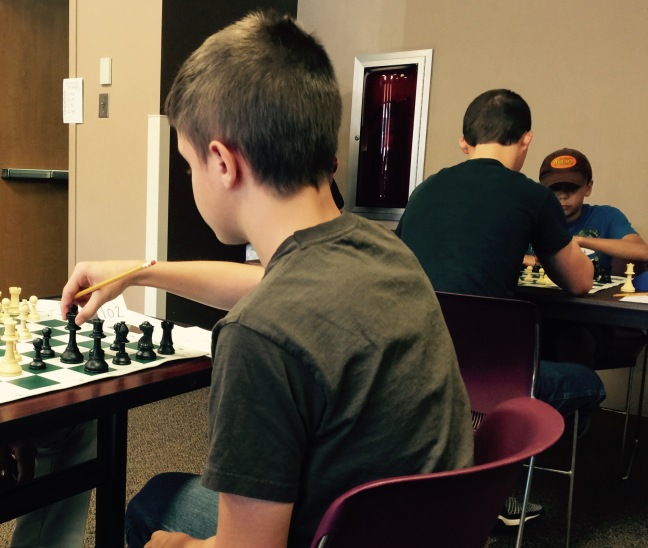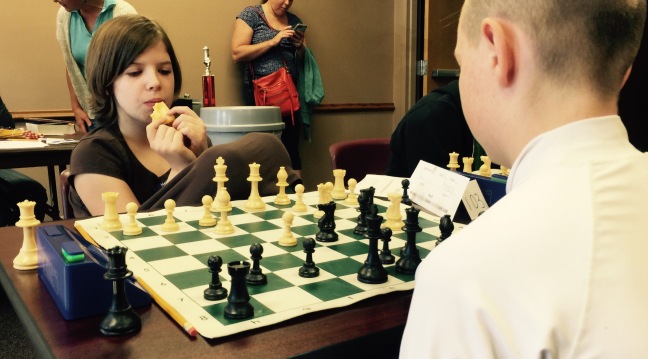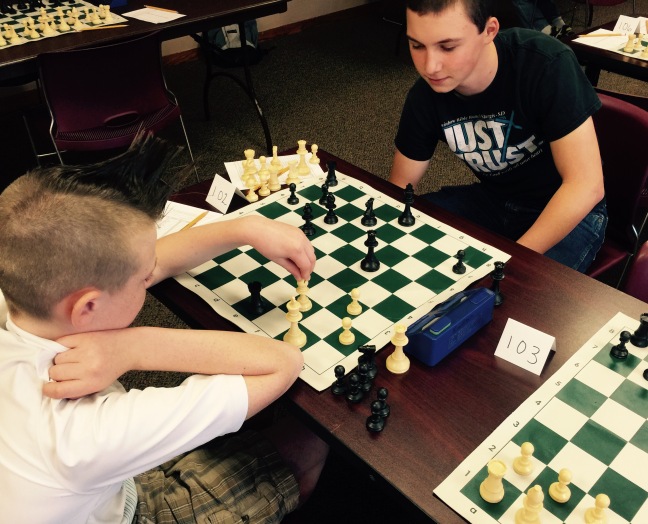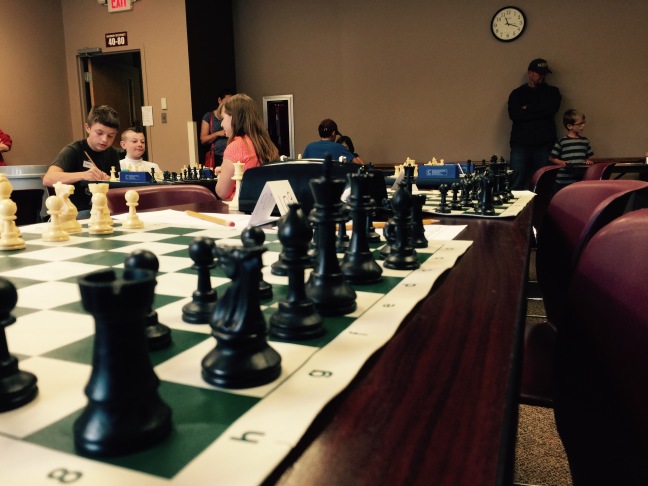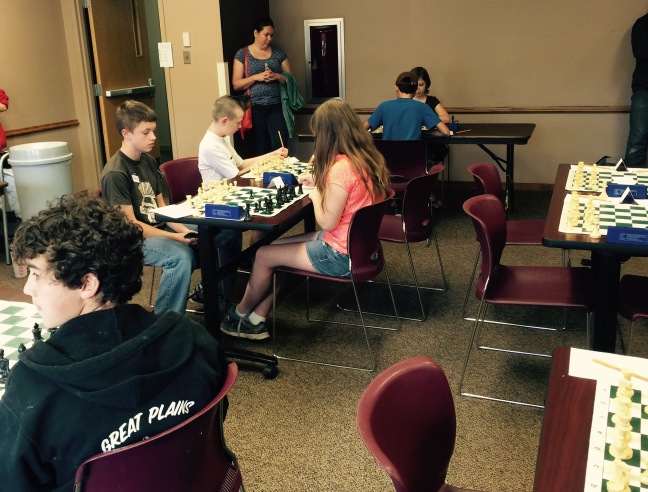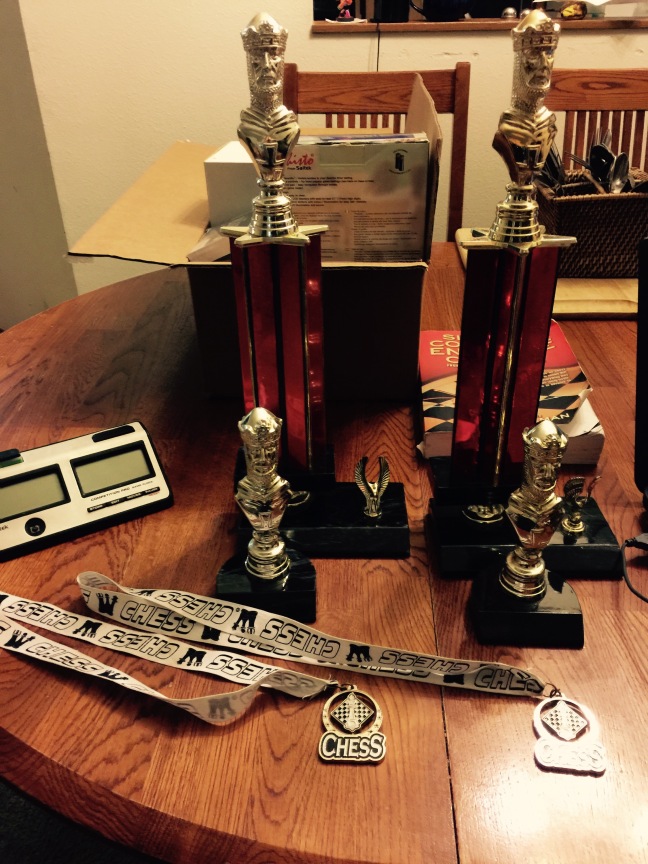New spot!
Don’t forget, our scholastic chess club will be meeting tomorrow at the rapid city public library in a new room 11:30-1:00 for this one week only. We normally meet in meeting room B upstairs in the youth area, but tomorrow we have been moved to the Hoyt meeting room first floor due to overbooking at the library. Please attend!!!!
In addition I would like to remind everyone I will be hosting a tournament next week on November 21 called the big turkey 🙂 if you would like to attend please download the registration form or simply send me an email with who you would like to register and their current grade. See you tomorrow!!!
Aaron Knudson
https://drive.google.com/open?id=0B_SxJZ9QckHjSHdJNGtPcWFiSDQ
Chess club!
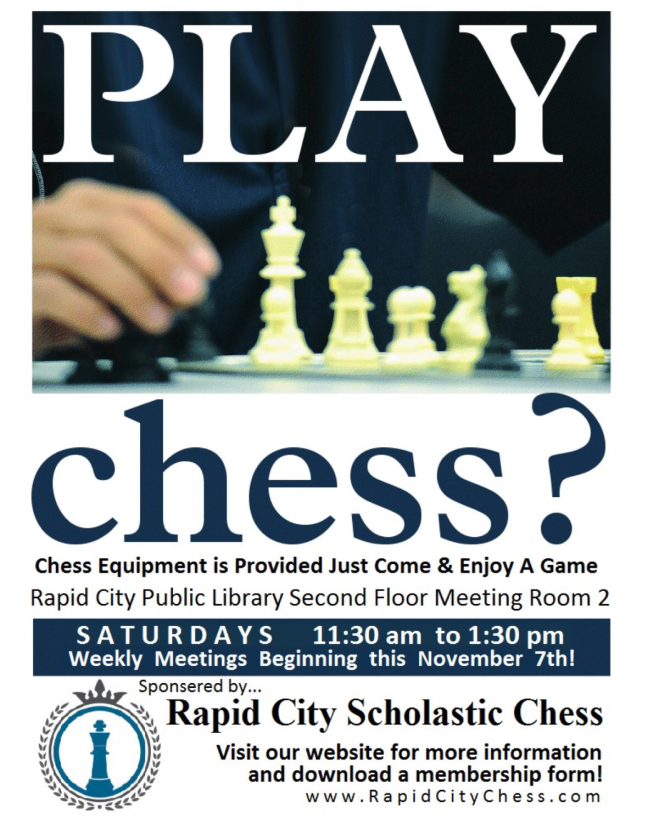
Who, when, where, and of course why we meet…
- Any school-age student Kindergarden-12th grade
- 11:00am-1:30pm
- Rapid City Public Library 2nd floor Room B
- To learn more, make friends, and to play!
More details…
The Rapid City public library has given us use of their large upstairs meeting room area found in the youth department 2nd floor. Parents can enjoy some books and also a little free time while students are participating.
Meeting will be of a relaxed structure. Quite a few chess clubs have focused more on player development and less on playing the game, the idea here is to give students the opportunity to interact and play with their peers rather than sit and hear tactical or endgame theory, lessons will be included just limited.
Skill levels will be from beginner to intermediate. A basic knowledge of how the pieces move and also being able to achieve checkmate is helpful but not required. Complete beginners are encouraged to participate. Please use the website http://www.chesskid.com to help with getting the basics down 🙂
Rapid City Scholastic Chess will provide the chess sets, clocks and boards. We will have a small membership donation to cover basic expenses. Please click the link for the membership form, or you can pick one up at our first meeting. Absolutely NO ONE will be turned away. If you can not afford the cost just come and enjoy a game!
Thank you for considering joining us in growing scholastic chess in Rapid City. See you at chess club!
The penultimate week…
Here we are, the penultimate week. I am so glad that students have acquired the knowledge necessary to play the game of chess at such a high-level in such a short period of time. We have one week left and I hope to make the most of it. One important announcement that I’m sure you are already aware of is we will be beginning the Rapid City Scholastic Chess Club at the Rapid City public library, Saturdays 11 AM to 1:30 PM starting this November 7th. Please contact me for any further details and join our Facebook group! https://m.facebook.com/groups/741823562615278
Today in the fifth and sixth grade class we played another chess variant in order to teach the importance of controlling the center of the chessboard. The name of the game was, “king of the hill!”


Bring your king to the center to win.
This variant is quite unique and makes for very intense games. It retains all standard chess rules.
Rules
1. All the Laws of chess apply. In particular, a move is legal if and only if it would have been legal in actual chess.
2. If you make a legal move that moves your King to one of the center squares (d4, d5, e4, e5) you win.
Clarifications
The winning move has to be legal, e.g. you can not move into check. If you move into check you lose! Checkmating your opponent is another legal way to win.
…Chess coaches, mentors and chess authors have always stressed about the importance of the center of the board (i.e. squares called e4, e5, d4 and d5). They have taught us often how important it is to have a hold on it during gameplay. But this favorite chess variant of mine, King of the Hill, takes the importance of the cener of the board to another level.
In the middle school/highschool group we practiced our lesson by playing “uncle bobs stinky pig” you can find the rules from last weeks post found here… https://rapidcitychess.wordpress.com/2015/10/23/week-6-review-announcements-and-homework/
THE LESSON for this week…
At today’s chess lesson I introduced two of the four principles of playing winning chess. The four principles are force, space, time and pawn structure. We focused on the first 2; force and space.
When I speak of force I am not speaking of Star Wars! Force refers to the number of pieces and their value relative to your opponent. So if we begin a game and no pieces have been taken or moved, you have an equal number of force each. Like players on a soccer field.
If you had the same number of pieces on the board but had one additional pawn (player) you have a +1 force count, and all things being equal it would indicate you are doing better/winning. The force is determined by the value of the pieces (some players are more valuable on a team) found in the picture below. If you would like to know more and how this applies to when you should trade pieces ask your students! 🙂
Space
We can think of space as the number of squares controlled or influenced by our pieces. Space and force go hand in hand when it comes to good chess. A player may have a superior force going into the middle game but might end up on the losing end of a position if their pawns and pieces control less space on the board. Having a superior force does no good if that force has no control or influence over crucial squares such as those in and around the board’s center or the opposition’s King.
Well that’s almost it! One week left and then they are off on their own 🙂 I hope everyone has enjoyed the class and look forward to those of you that will be joining our upcoming weekly chess club.
And the homework? Teach one person to play the game and… PLAY LOTS OF CHESS GAMES!!!!
One last thing for those that were patient enough to read this entire thing 😉 We will have an upcoming chess tournament (free to everyone) this November 21st called the K-12 “Big Turkey” Chess Classic. Please make plans to attend!!!
Week 6 review announcements and homework.
So today in the homeschool co-op chess class the students were taught about forks, pins, and skewers. We are really starting to get into the meat of the game! We also reviewed the entire class 4 final chapter test (man we needed that:) and the primary grade group got to play another chess variant called “uncle Bob’s stinky pig”
I realize some students had difficulty with class 4 and lots of frustration by not seeing what answers they had gotten incorrect on the test. I apologize for any stress this may have caused, we reviewed the entire test together in class today hopefully clearing up any confusion and enabling all the students to retake the test and complete it with flying colors. At this point we have students deciding to move ahead in the class levels and I encourage any student who feels comfortable taking the next lesson and bringing in a completed certificate to do so and earn their next thinking belt.
In the primary class for fifth and sixth grade we ended the day with a Chess Verriant called uncle Bob’s stinky pig.
 Here are the rules for that game. I think the students had a lot of fun!
Here are the rules for that game. I think the students had a lot of fun!
“Uncle Bob’s Stinky Pig!”- Rules and Regulations:
The boards for each section are placed on the floor in a straight line. Players are randomly paired by the tournament officials at the start the match.
Each player will play this opponent for 45 seconds.
Then, the official yells “switch” and all players move to the board to their right and begin playing on that board. Do not reset the board.
Boards are reset only in the event that some checkmates, stalemates, or draws.
When a player wins, he or she raises his or her hand and calls out “checkmate”, “stalemate” or “draw”. An official will come over, verify the win and write down the winner’s name. The board can then be reset and a new game begins. If the official calls switch as a game is being won, quickly reset your board (with the help of the players who are moving), before moving to the next boards.
Players will get one point for a checkmate and 1⁄2 point for a stalemate or a draw.
No forfeits (resignations), no requesting draws and no accepting draws.
Deliberate “stalling” is not allowed. You can lose on time!
The top player who win the most number of games in each section, will win a prize.
Regular USCF chess rules apply, including “touch move”. Clocks are used.
Any ties at the end of the match, will be broken by a snout to snout “pig-off”.
Chess Tactics (This weeks lesson)
Chess tactics are the next level of playing the game of chess. Once you know how the basic rules and guidelines, tactics are moving up to where the battle really takes place! We studied forks, pins, and skewers. Below are some examples of those to practic this week while playing their games.
Now for the homework…
Last weeks assignment was to complete class 4 which we still have not received over 75% of students work as of now. If you have not turned in this assignment please finish this (retake and print the certificate) in addition to next weeks “game” assignment. This should be a breeze (we did it all in class!) 😉
This week’s homework is going to be some simple practice on “zap the teacher” 1,2 and 3 and “who wants to be a millionaire.” These will be excellent practice for students, maybe even a little too easy, please parents verify they did this by showing you they passed. (The certificate page is not showing up for some reason)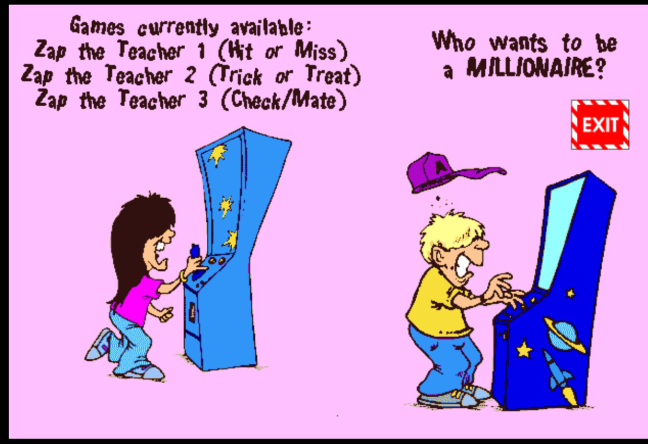 http://www.chesskids.me.uk/kidzone/vidgames.htm
http://www.chesskids.me.uk/kidzone/vidgames.htm
I hope your students are having a lot of fun and I look forward to next week. I can’t believe we are getting close to the end! I also would encourage you to join our upcoming weekly chess club meetings that starts November 7th at the Rapid City public library. Here is the link to our Facebook group page for more details. https://www.facebook.com/groups/741823562615278/
Chess club anyone?!
Any students are welcome! We have a few school age students (homeschool, private and public) interested in meeting again for a weekly chess club. Ages of those interested so far are mostly 8-14 year-olds. But anyone 5-18 are welcome 😊
The Rapid City public library has meeting room space for us to use. Parents could enjoy some books and also a little free time while students are meeting. The proposed day to meet for now would be Saturdays from 11am to 130pm starting this November 7th.
It will be a relaxed structure. I have ran quite a few chess clubs that had focused more on player development and less on playing the game, the idea here is to give students the opportunity to interact and play with their peers rather than sit and hear tactical or endgame theory, lessons will be included just limited.
Skill levels will be from beginner to intermediate. A basic knowledge of how the pieces move and also being able to achieve
checkmates is required. Although complete beginners can participate as well, they must understand the movement of all the pieces. The website http://www.chesskid.com can help with this.
Equipment will not not needed, I will provide the chess sets clocks and boards. We will have membership costs (I’ll send you a form if your interested or you can pick one up at our first meeting) to cover some aspects but that will be minimal.
I will keep all informed of the plans as we go forward. It is my hope there will be enough family’s excited to really get it off the ground!
Please call or email me if you have any additional questions.
Here is the member form link… https://drive.google.com/open?id=0B_SxJZ9QckHjRVJla3hLRHY4dkk
And the Facebook group link… https://m.facebook.com/groups/741823562615278
Class review and week 5 homework
Today was the first time we introduced a chess variant. These are games which uses Chess as it’s foundation but change one small aspect. The name of the game we play today was called “bug house” this game involves having a partner and both partners play against another team. Here are the rules of your interested in giving it a shot 🙂 http://bughousechess.wz.cz/CompleteBughouseChessRules.htm
It’s definitely fun to break up the monotony of strict long games with other students. We will be getting back next week to some traditional games and our focus will be on incorporating the things we learn from class 4 which will be our homework for this week. Formally students have completed sections 1-3 on class 4, this weeks assignment will be to complete the last four sections. http://www.chesskids.me.uk/kidzone/class4.htm
 On each individual lesson there are small quizzes (10 questions each) to review. These quizzes are not the final chapter test which I would like to have submitted as proof of completion. But, the quizzes are essential to review the information learned in each individual lesson.
On each individual lesson there are small quizzes (10 questions each) to review. These quizzes are not the final chapter test which I would like to have submitted as proof of completion. But, the quizzes are essential to review the information learned in each individual lesson.
Here is the link to the final test for class 4. http://www.chesskids.me.uk/tests/quiz4n.htm
It is 15 questions. Please either print out the certificate to bring next week or send me a screenshot with the completed certificate pictured.
Three of the sections are going to be discussing one of the most foundational principles of playing a great chess game. They are called chess tactics. The three chess tactics we will be concentrating on will be forks, pins, and skewers here’s a short example of what those things are.


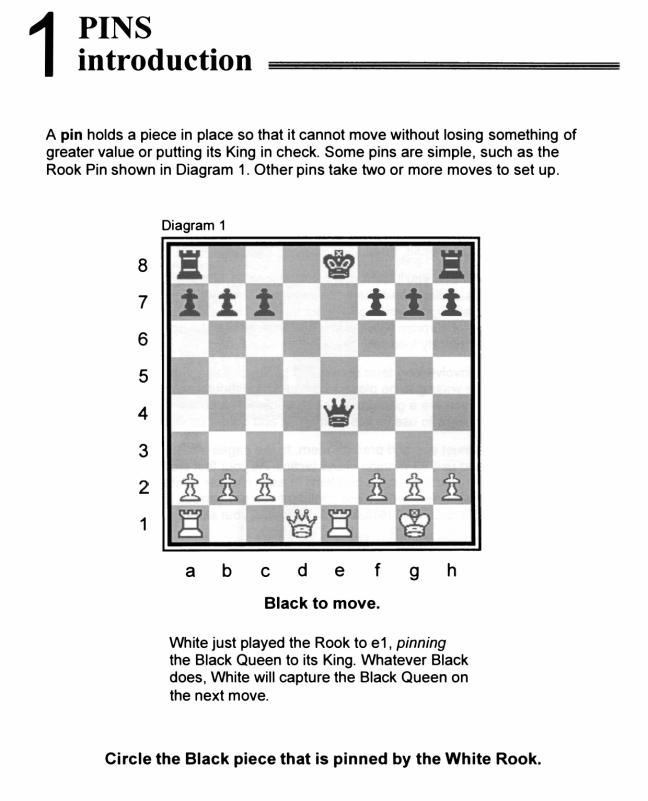

I hope all of the chess homework goes well:) And remember, students can work as far ahead in the chess lessons as they would like… all the way up to earning their black belt in thinking! As always if there are any questions comments or concerns please contact me by phone or email. 605-939-4003 or Aaronknudson@gmail.com
I would also like to encourage all students to play as many games as they can with opponents that will match their abilities one great place to do that is on the http://www.chesskid.com website. Playing lots of games will increase students “board vision” and allow them to grow in their abilities which will surpass most casual players.
God bless and have a great week!
-Aaron Knudson
Bughouse day!
Awesome day of chess today at homeschool co-op. I showed the kids how to play a chess variant called “Bughouse”, it’s a two team four player game and the students love it!
Here’s more info…
http://bughousechess.wz.cz/CompleteBughouseChessRules.htm
And just in case students would like to learn some specific strategy for the game here are some general pointers…
Bughouse strategy
1. Moving non-center pawns is risky and should be avoided unless necessary. Pieces have easy access into your position through piece drops, and any “holes” can be taken advantage of. Likewise, moves to create holes are very useful (P@h6, etc.).
2. The best strategy is attacking, as fuel for the fire can be quickly received through piece flow. In contrast, positional play is too slow for the game; why attack a weak pawn when you get one instantly through a teammate’s piece trade?
3. Important! Play two(count em, two) boards, and not just your own. Know when trading is ok, and know when it should be avoided. Make sure you and your partner have good communications as to what pieces are good and what pieces are bad (for the opponent to have.)
4. Sacrificing a piece is often worth opening an opponent’s king position, but only if an attack can be continued. Do not simply sac then nag your opponent for pieces as you may not get them.
5. The f2/f7 squares are the weakest on the board (being only protected by the king) so, as a rule of thumb, attacks are quickest through these squares. An often seen remedy for sacrificial attacks is 1…e6 but a good response to this move is “laddering” (See tip 8)
6. Make sure you King’s bishop is always developed. The king needs breathing room in case of a sacrificial attack, and often the safest square is f1/f8.
7. Play fast! In most games, time can be a deciding factor. Players can stall for a needed piece if they’re up time, but have to move if they’re not. In some situations, mate can only be avoided through a piece drop, but if they’re down on time, then its game over.
8. “Laddering” is a plan that consists of connected pawns toward an opponents position, and is very useful in cracking a cramped position. An example of a ladder is: 1. d4 d6 2. e4 e5 3. d5! Be7 4. Bc4 threatening P@e6 with a strong attack. Note: The french advance (1. e4 e6 2. d4 d5 3. e5!) is a very good opening in “bughouse” compared to its normal chess mimic. The routine 3…c5 merely creates holes in blacks position at c7 and d6, and white has already begun a “ladder” towards d6 or f6.
9. A piece in hand is worth two on the board. Placing a piece down to check or to merely threaten a piece is a waste of your teammate’s hard work (in getting the piece.) Use your own pieces till pieces in hand can be put to optimal use.
10. Castling is, for the most part, not recommended. Knowing where you king lies makes it easier for an opponent to know where he should concentrate his pieces. It also takes a move, which is crucial in bug.
Have fun! Just remember its always your teammate’s fault if your lose, and if he/she complains, just tell him/her to get better! Likewise, if you win, then its all you baby! Gloat and complain to your teammate that he didn’t do a thing (if your teammate is the one who mated, then just say he couldn’t have without your pieces!). Lol!
